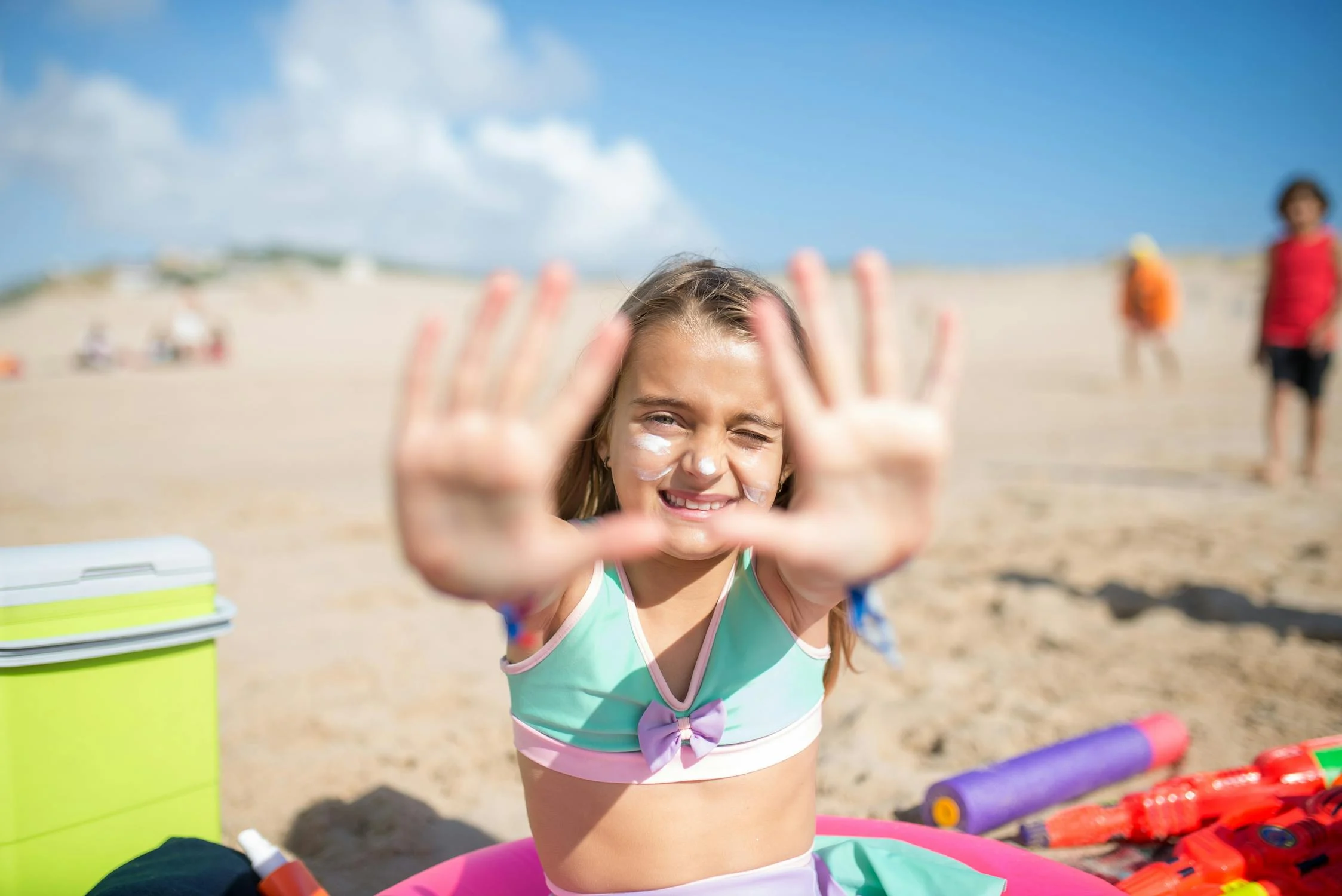
Sun Safety for Little Ones: Choosing the Right Sunscreen.
Protecting your children’s delicate skin from the sun’s harmful rays is crucial. Sunburns and excessive sun exposure in childhood are linked to an increased risk of skin cancer later in life. But with so many sunscreen options available, how do you choose the right one for your child?
Sunscreen 101: What to Look For
Broad Spectrum Protection: This is non-negotiable. Look for a sunscreen labelled « broad spectrum » to ensure it shields against both UVA and UVB rays. UVA rays penetrate deep into the skin, causing premature aging and wrinkles, while UVB rays are responsible for sunburn.
SPF 30 or Higher: The Sun Protection Factor (SPF) indicates how effectively a sunscreen filters out UVB rays. For children, choose a broad-spectrum sunscreen with SPF 30 or higher. Higher SPF sunscreens offer greater protection, but reapplication is still essential.
Water Resistance: For active little ones who love playing in the water, a water-resistant sunscreen is key. However, remember that water resistance wears off over time, so reapply sunscreen every 40 minutes to 80 minutes, or more frequently if your child is sweating heavily.
7 Ways to Keep Your Kids Safe at the Beach This Summer
Mineral vs. Chemical Sunscreens: Mineral sunscreens, containing zinc oxide and titanium dioxide, sit on top of the skin, reflecting UV rays. These are generally gentler on sensitive skin and are a good option for babies over 6 months old. Chemical sunscreens absorb UV rays and convert them to heat, which is then released from the skin. These may be more cosmetically elegant, but some children can experience allergic reactions.
Sunscreen for Sensitive Skin and Babies
Start Sunscreen at 6 Months: Pediatricians recommend waiting until a baby is at least 6 months old before introducing sunscreen. Their skin is incredibly delicate, and sunscreen ingredients can cause irritation.
Protect Babies with Clothing and Shade: For babies under 6 months, the best sun protection is to keep them out of direct sunlight, especially during peak sun hours (10 am to 4 pm). Dress them in lightweight, long-sleeved clothing, pants, a wide-brimmed hat, and sunglasses. Seek shade whenever possible.
Choose « For Kids » Formulas: Look for sunscreens specifically formulated for children. These are often free of fragrance and other potentially irritating ingredients.
A Note on Allergies
Some children can have allergic reactions to certain sunscreen ingredients. If you notice redness, itching, or a rash after applying sunscreen, discontinue use and consult your pediatrician.
Sun Safety Beyond Sunscreen
Sunscreen is an essential tool for sun protection, but it’s not the only one. Remember to:
Seek shade, especially during peak sun hours.
Dress children in sun-protective clothing, such as hats, long sleeves, and pants.
Reapply sunscreen every two hours, or more often after swimming or sweating.
Keep babies hydrated with plenty of fluids.
By following these sun safety tips and choosing the right sunscreen for your child, you can help ensure they enjoy the outdoors safely and develop healthy sun habits that will last a lifetime.


